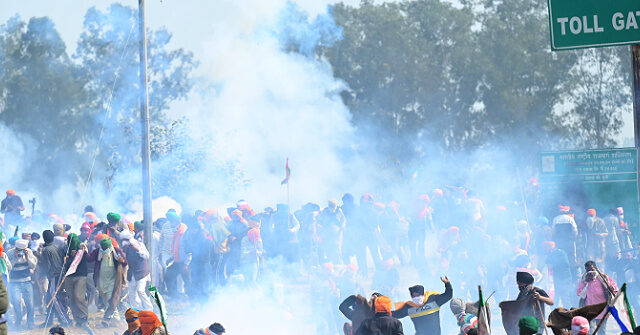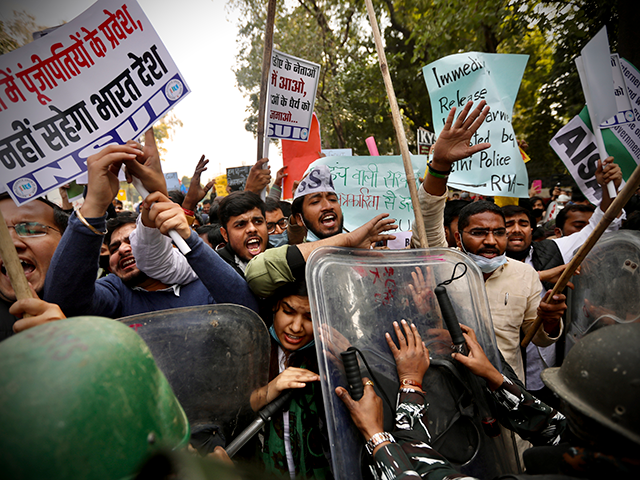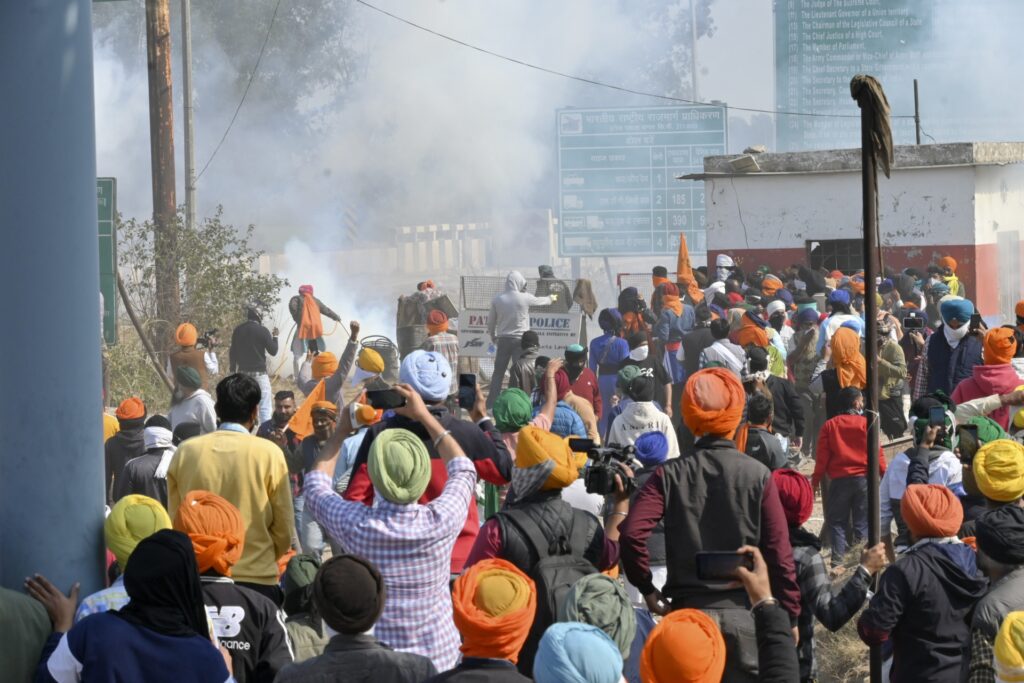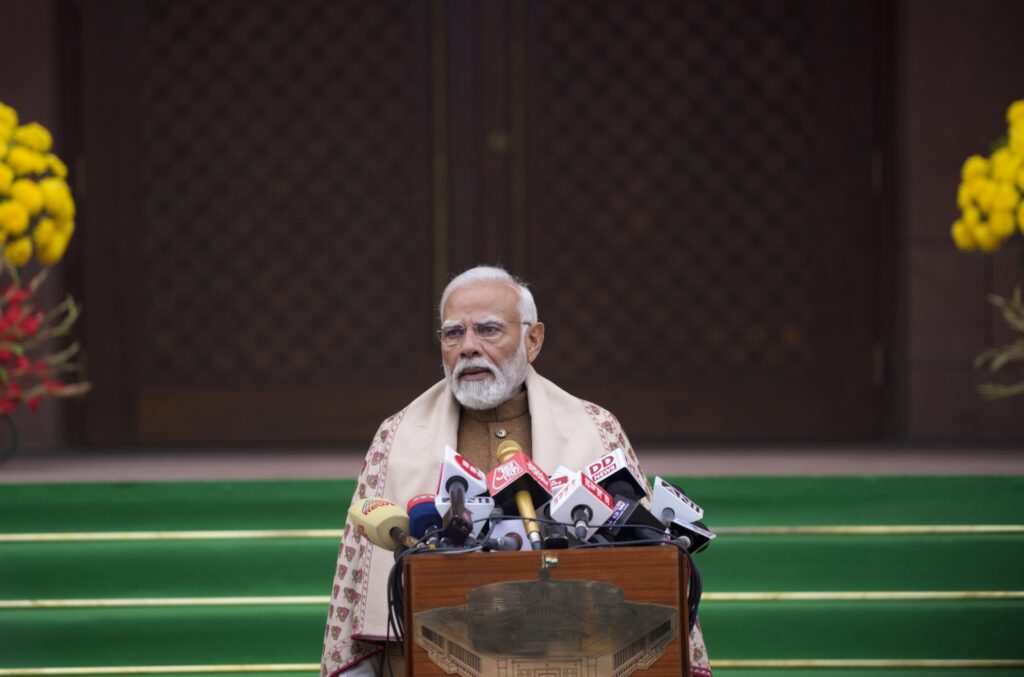
Police in India used drones to drop tear gas on a growing legion of angry farmers as they marched on New Delhi on Tuesday. The police also threw up barricades on major roads leading into the national capital and banned gatherings of more than five people to thwart the protests.
Indian farmers previously staged massive protests in 2020 and 2021, angered by Prime Minister Narendra Modi’s agricultural reforms. The reform package was supposed to modernize the farming industry and remove some inefficient price supports, but farmers who were already struggling with poverty said the “three laws” proposed by Modi would make it impossible for them to survive.
Modi personally pleaded with the farmers to break up the protest camps they erected around New Delhi and return home, but the farmers stayed put for more than a year, braving harsh seasons and the Wuhan coronavirus pandemic. Modi eventually gave in and repealed the three controversial laws.

Security officers push back people shouting slogans during a protest held to show support to farmers who have been on a months-long protest, in New Delhi, India, Feb. 3, 2021. (AP Photo/Manish Swarup)
The new protest once again involves tens of thousands of angry farmers converging on New Delhi, many of them riding on tractors and trucks. The farmers say Modi reneged on some of the promises he made to end the 2021 protests, including pledges to double farmers’ incomes and guarantee minimum crop prices.
The farmers are demanding a pension program for farmers over 60 years of age and special terms for farm loans. They want India to withdraw from free trade agreements and the World Trade Organization (WTO) because they see those memberships as distorting the price of Indian agricultural products.
Most importantly, the farmers want an expanded system of minimum support prices (MSP) — a guaranteed minimum price the government will pay to purchase crops, set high enough to compensate farmers for implicit costs, risks, and setbacks, such as market fluctuations and bad weather.
Critics of MSP policy say it makes Indian agriculture inefficient and hidebound, with few incentives to develop better techniques or find innovative solutions to problems. Furthermore, some of India’s most serious agricultural problems are structural and predictable, like declining water tables in some key farming areas, so skeptics say MSPs would simply become inefficient and very expensive welfare programs.
Indian government sources told the Times of India (TOI) on Wednesday that the minimum prices demanded by the farm protesters would be a “fiscal disaster” that could consume most of the national budget, leaving very little for other social and economic programs. Another major farmer demand, government-subsidized electric power for their equipment, would also be incredibly expensive and could result in farmers using massive amounts of “free” energy to pursue dubious agricultural projects.

Farmers react after police fired tear gas at protesting farmers near Shambhu border that divides northern Punjab and Haryana states, almost 200 km from New Delhi, India, Feb.14, 2024. (AP Photo/Rajesh Sachar)
Determined to prevent tent cities from once again springing up around New Delhi, the police erected barriers of metal and concrete across the highways. On Tuesday, the police dispatched drones laden with tear-gas canisters to break up columns of protesters that were trying to break through the barriers about 145 miles from New Delhi.
Farm union leaders said the march would continue and the farmers are ready to camp around the capital for months until their 12-point agenda has been satisfied. The state of Haryana, which lies between the farmers and their destination of New Delhi, has begun reinforcing its barriers with razor wire and nails embedded in the road.
The BBC on Wednesday quoted protesters who said the police used rubber bullets and water cannons on them, in addition to tear gas. They also said Indian media was unfairly portraying them as “terrorists” or political operatives for Indian opposition parties. Farm association leaders said at least a dozen farmers were arrested on Tuesday and Wednesday. The police said several of their officers were injured when the protesters threw rocks at them.
The Indian government implored farmers to return to the negotiating table, and farm leaders said they were ready to do so — as long as the negotiations are held near the areas where protesters are massing.
The new farm protests come at a delicate moment for Modi as elections are scheduled for April and May. The opposition Congress party promised on Tuesday to meet the farmers’ demand for minimum crop prices if they are voted into power instead of Modi’s BJP party.

